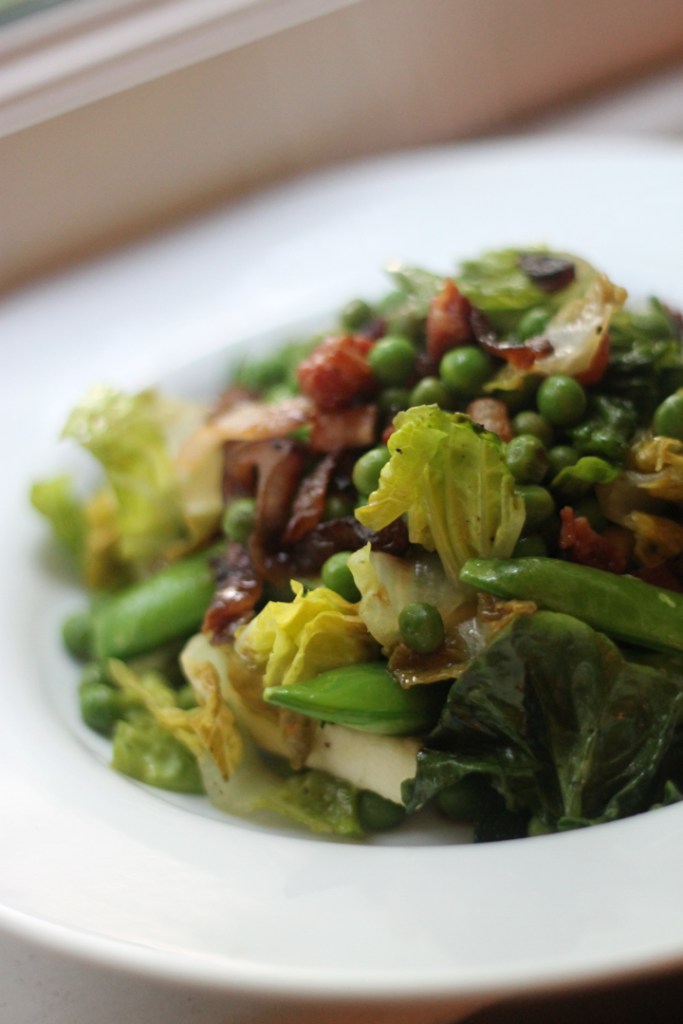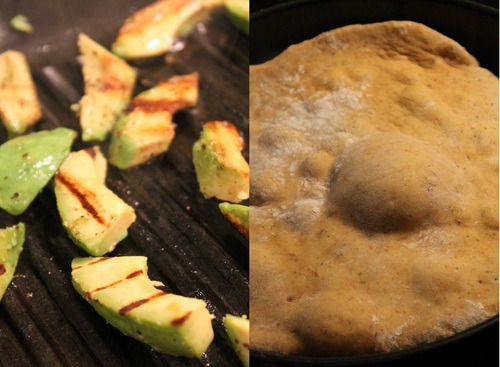

T
his green spring stew celebrates vegetables but warms the stomach and is a nice transition from a cold Spring day to a Summer evening! You can absolutely experiment with adding different vegetables such as those listed below – weights and measures are also very rough here. Use your hands and throw things in! Just be concious of the cooking times of the different vegetables you choose – asparagus will need to just touch the heat before its overcooked, while green beans will need a little more time. So add these along the way accordingly. Open to variation but the lardons and garlic provide a good foundation and depth of flavour to build on so I recommend these as a must.
I cooked and served this with a delicately fried piece of seabass but a pan fried fillet of soft pink trout would be an excellent and seasonal choice. Topped with a dollop of homemade and indulgent hollandaise (see here) if you want to take this to a higher level or add another dimension.
Serves 2
- 2 x seabass/seabream/trout fillets
- 300g frozen garden peas (approximate weight)
- 2 x little gem lettuce, chopped roughly
- 200g smoked bacon lardons
- 200g sugar snaps peas/green beans/asparagus tips/chopped courgettes (or a mixture of them all)
- 1 red onion, sliced thinly
- 1 large garlic clove, chopped finely
- 1 bunch flat leaf parsley, chopped
- 1/2 lemon, juice only
- 1/2 stock cube
- 1 tbsp soft unsalted butter (For the beurre manie, see Cheffy Tip!)
- 1 tbsp flour
Cheffy Tip: I often use a ‘beurre manie’ (aka, kneaded butter) when I want to thicken a sauce but not make a white sauce or a roux. When you make a casserole and the sauce is a bit thin, or when you want to make the juices in a pan a bit thicker this is your tactic! When you mix the butter and flour into a paste, you coat the flour in butter particles. That way, when you stir this paste into hot sauces and liquids, the butter melts and distributes the flour particles evenly ensuring there are no lumps! (Ideally). You can make a small bowl and then add in tablespoons bit by bit until the thickness desired.
- Heat a splash of olive/sunflower oil in a frying pan and sauté the red onion for 8-10 minutes until translucent and softening. Continue cooking until they begin to turn a little golden but don’t burn. Season well.
- Add the garlic and cook for a few minutes only.
- Add the bacon lardons and cook through until crispy.
- Crumble the half stock cube into a mug and add some hot water (about 300ml but its not exact, you won’t use it all, it will have to be used by eye)
- Add the frozen peas and toss briefly. You now need to work quickly as the pea, sugar snaps and lettuce will cook fast and you don’t want soggy overcooked fresh greens! Ideally the vege/lettuce should be al dente.
- Pour a good splash of the hot stock into the frying pan, enough so that there is a ‘sauce’ that will simmer you veges but not so that its swimming! You don’t need to use all the stock but its there to balance the sauce as you wish. Bring to a simmer.
- Meanwhile, in a small bowl mash the soft butter with the flour to a paste until dough like (this is called a ‘beurre manie’). Whisk this quickly into the liquid in the frying pan – I stress quickly to ensure no lumps. This ‘paste’ will thicken the sauce but ensure no lumps. Simmer very gently and you should see the sauce start to thicken a touch. Make/add more more paste as needed if you’ve added lots of stock.
- Once you’ve done this, add the chopped little gems and the vegetables of choice and cover the pan with a lid. Let the heat and sauce steam the veges just a touch to let it warm but not go too soggy.
- The ‘stew’ should have a thick gravy like sauce but its shouldn’t be swimming in moisture so if it is, just turn the heat up a notch and reduce some of the liquid down. Remove the pan from the heat when ready, check and season as needed and scatter in the chopped parsley.
- Finally, add a good squeeze of lemon for seasoning.
- Enjoy with a pan fried fillet of fish or steamed cod. Trout would be a great addition here.











































